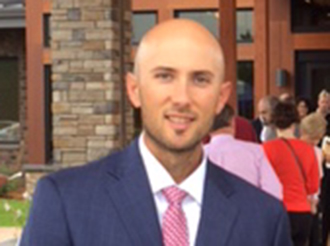Dakota Cole, undersecretary of treasury for the Chickasaw Nation, leads the Chickasaw Nation Community Development Endeavor as managing director. In 2015, CNCDE received a $20 million allocation of New Markets Tax Credits (NMTCs) from the U.S. Treasury, its first, and as of this week, has successfully deployed the entire allocation into three economic development projects.
I caught up with Dakota recently to ask about this exciting milestone and other news.
Q: Chickasaw Nation Community Development Endeavor (CNDCE) has now successfully deployed its $20 million New Markets Tax Credit (NMTC) allocation. Can you tell us about the transactions you financed with this award?
A: CNCDE completed three very impactful transactions in Indian Country. Lac Vieux Desert Health Center, Ho-Chunk Inc., and L2020, as we refer to them, each offered a myriad of catalyzing qualities i.e. health care jobs, new medical services, economic development, multi-use facilities, living space, etc.
Candidly, an impressive part of these deals were the people/stakeholders involved and the perseverance employed to see each deal closed successfully. CNCDE is very thankful for all parties involved and their willingness to work with our new CDE.
Q: What is CNCDE’s mission?
A: CNCDE provides capital to organizations, sparking positive change in low-income American Indian, Alaska Native and Native Hawaiian communities. CNCDE values sovereignty, creativity, sustainability and respect for local decision-making processes.
Q: How does CNCDE select projects for investment?
A: CNCDE has a national service area for Indian Country; therefore, our initial selection criteria begins with location and ownership of the project. As you might expect, our selection process is much more than location; it is based on community impact, inherent demands of the surrounding low-income community and economic sustainability. Candidly, we do not deploy a rigid underwriting process typically experienced in the capital market place. Ours is more qualitative and community focused with limited necessary financial data.
Q: What are positive trends you see in Indian Country economic development?
A: Indian Country is experiencing noticeable tailwinds regarding flexed capital stacks; i.e. New Markets Tax Credits (NMTCs), general obligation bonds, revenue bonds, Title VI Loan Guarantee Program funds, and USDA, coupled with each other.
It’s important to continue pushing the envelope and communicating with our legislators about the need for federal programs to work collaboratively to enable a better use of federal programs and catalyze Indian Country shovel-ready projects.
Q: What challenges does Indian Country face in terms of economic development?
A: Without a doubt, the capital market still serves as a barrier in terms of traditional financing. Large banks cannot get comfortable with sovereignty regardless of their claims; nevertheless, we should view their hesitation as business opportunities for Indian Country to service its own capital needs.
Q: Tell us a little bit about your family and what you like to do in your spare time.
A: I’m blessed with two beautiful kids and the most patient, forgiving, kind-hearted wife! I’ve been told on numerous occasions that I’ve “out punted my coverage.”
We enjoy riding horses, working on our ranch and spending time with family and friends. We own about 110 heads of cattle and eight horses, including a mini-horse named Cornflake for my son, Creek, who is 1, and a white pony named Silver for my daughter, Conner, who is 4.
Read more:


